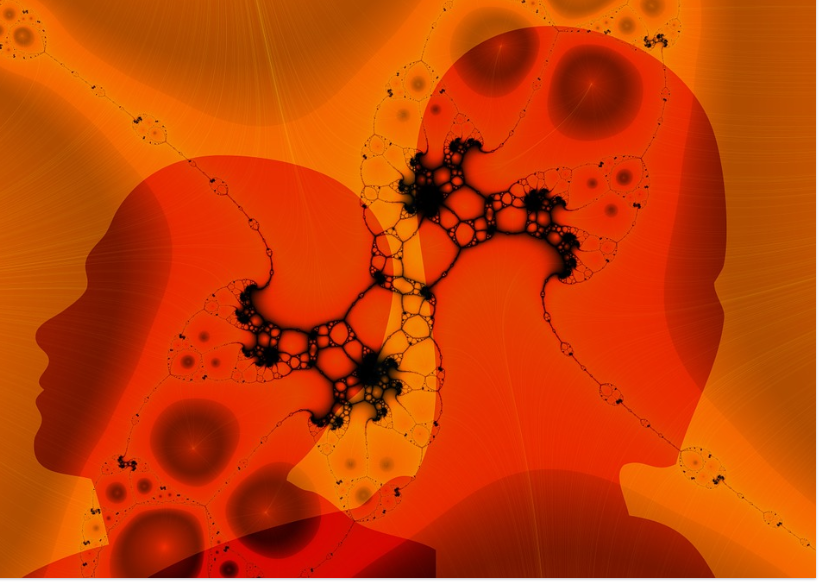How Does Visualization Work?
Learn how visualization works and how it can help you achieve your goals.

Selfpause Affirmation App
Download the app to get 1,000’s of affirmation meditations and everything you need to write, record and listen to your own.
Mental imagery activates pathways in the brain. It helps you prepare for a situation and relieves stress. In addition, it can help you achieve a goal. Here are some tips to help you get started: Try imagining yourself in a situation you’re preparing for. Think about a time when you were excited and emotionally intense. Then, try to recreate that feeling.
Brain Pathways Are Activated By Mental Images

Researchers have explored the neural basis of mental images and found that they involve the circulation of impulses up and down a hierarchical structure. However, the exact mechanisms involved in forming and storing mental images are still unclear. Using the MRI technique, researchers were able to identify the areas in the brain that correspond to different types of mental images.
While most of us can imagine an object as a whole, in reality, we process it as if it were a puzzle made up of pieces. This process is known as mental rotation, and the human brain processes images as if they were mathematical propositions. Theoretically, these processes are more efficient in the left cerebral hemisphere than in the right.
Another common method of mental imagery is daydreaming. This process involves the creation of mental images while reading a book. Many athletes use mental images during training or before a competition. Even musicians visualize the notes of a song in their minds. While mental images are not the same as afterimages, the process of imagining is voluntary and under conscious control.
During the process of forming new neural pathways, it is important to question your current beliefs. Identifying and questioning your existing beliefs can help you achieve your goals and live a happier, more fulfilling life. The most difficult habits to change are those that have been around for years. These have carved the deepest paths in the brain.
Visualization Can Help You Prepare for a Situation

Visualization is an exercise that can help you prepare for a difficult situation. It engages the reticular activating system in the brain, which acts as a filter and determines what is important from irrelevant information. The human brain is capable of processing about 126 bits of information per second. This means that by visualizing the scenario you want to have, you will be able to get a better feel for how to react.
Visualization can also help reduce stress levels. It can help you see a situation from a variety of perspectives, and allowing yourself to try different approaches to a situation can help you decide what to do next. Practicing visualization can improve your mental state, and it can even help you change bad habits.
Visualization works by creating a positive mental image of the situation you are about to face. It prepares your brain to take the appropriate steps and be brave. The brain is geared toward survival, and if you don’t visualize a situation that’s potentially dangerous, it will steer you back to safety. By practicing visualization, you can make your mind see your goals clearly and the steps to reach them.
While it’s important to practice visualization, it’s crucial to use all your senses in order to make it more effective. For example, if you want to be a better public speaker, visualize speaking to a large audience. Or maybe you want to increase your client contact. The more you practice, the better you’ll do in reality. Writing your visualizations down is also a good idea.
Visualization Can Help You Achieve Your Goals

Visualization is a technique to focus your mind on achieving a specific goal. When you visualize something, you are more likely to achieve it. You can capitalize on this technique by creating sensory triggers for your subconscious mind. For instance, if you are training to participate in a powerlifting competition, you can play a playlist with music that will make you think of the event.
One way to visualize your goal is to write out the steps that you need to take to achieve it. You can use your phone’s calendar or a day planner to do this. You can also use an app to help you create a To-Do list. Either way, a detailed To-Do list almost guarantees success.
Another way to use visualization to achieve a goal is to envision a scenario that you want to achieve. You can imagine the steps you’ll take to achieve that goal and even overcome any problems that may arise. This helps you prepare for the obstacles you’ll face along the way, especially when a difficult situation is approaching.
The next step is to identify the steps necessary to achieve your goal. These steps might include a scripted introduction, a series of talking points, a slide showing your outline, and how to look and talk to make sure your presentation is effective. You’ll also want to visualize your hand motions and look directly at your audience while you deliver your presentation.
Visualization is a valuable strategy to achieve any goal. It helps you believe that you’re capable of achieving your goal. By picturing your desired outcome, you can make yourself feel that success is inevitable. You can begin with small steps and gradually increase the number of times you use visualization every day. Eventually, you’ll be able to achieve your goal at a faster pace than ever.
Visualization Can Help You Deliver Better Results

Data visualization makes it easier to make better business decisions and understand the data you are working with. Often big data and complex analysis can be difficult to digest. With visualization, you can present the information in a way that everyone can understand. This method speeds up the analysis process and allows you to analyze the data in a way that will improve your bottom line.
Visualization is an important tool for sales teams. It helps salespeople track their progress and motivate themselves to achieve targets. For example, if your team is tasked with generating X number of deals, a visual report of the number of calls per salesperson and the number of deals closed can be a great motivator. Visualization also helps sales managers identify salespeople who are struggling to achieve goals and give them additional support.
Visualization is also useful in explaining and exploring ideas surrounding business data. The human brain processes visual information at a much faster rate than any other type of data. By using multiple visual aids, you can streamline the process of applying data and sharing it with your audience. Visualization also makes it easier to share information and control team-based information resources.
In conclusion, visualization is useful in a variety of ways and can help you to unlock your potential by assisting you with achieving your goals.
Our Top FAQ's
There are many different types of visualizations that can be used to represent data, including bar charts, line graphs, scatter plots, pie charts, heat maps, and tree maps.
The appropriate type of visualization for a given dataset depends on the type and structure of the data, as well as the message or insight that you want to convey. For example, a bar chart is a good choice for comparing the values of different categories, while a scatter plot is better for showing the relationship between two numeric variables.
When creating a visualization, it is important to consider the design and layout of the chart, the use of appropriate scales and axes, the labeling of data points and axes, and the use of colors and other design elements to enhance the visual appeal and clarity of the chart.
Visualizations can be used to effectively communicate data insights to different audiences by using clear and concise labeling, choosing an appropriate level of detail, and considering the audience’s level of familiarity with the data and the topic.
Charting libraries and tools, such as D3.js and Tableau, provide a range of features and functions to support the creation of visualizations, including pre-built chart templates, customization options, and support for interactivity and data manipulation.
